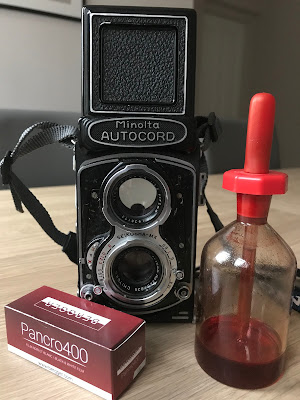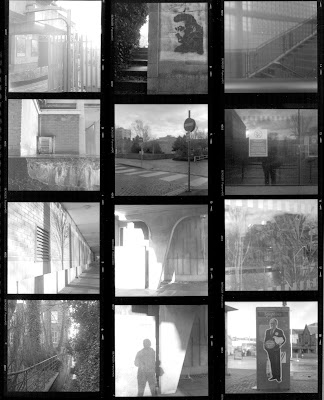Morning folks - I hope you are all well and still breathing.
Today's wee post title was inspired by the following photo, captured on a tired, dull morning at the end of December.
Better get your suits on though, because, "Here Come The Men!"
Don't you think that in today's day and age - the Roaring 20's (sic) when "Anything Goes Dwarling" -the photo below is a total anachronism?
 |
| Here Come The Men |
I do.
I found it on the side of a closed shop in Dundee, beside a wee pend (Rankine's Court) leading to The Keiller Centre.
For those of you local, you know exactly where I am; for everyone else, this late 70's faux indoor market has had a chequered history. It sits on the site of the original Keiller factory, purveyor of Jams and Chocolate; Cakes and Marmalades and so on - you've heard of both Dundee Cake and Dundee Marmalade right? Well this was their home!
The factory site was redeveloped in the 1970's.
Apparently, for most of its life before it was knocked down, the lanes surrounding the factory smelled of cocoa and butterscotch.
When the Keiller Centre opened in 1979, it was quite a destination, butchers, bakers, fruiterers; record and video shops; clothes both new and surplus; confections and papers. People loved it.
But as with all things, its use declined.
It was renamed the Forum back in the 1990's, but then was renamed with its original name in the 2000's because Forum sounded fecking stupid and I was inclined to agree.
Today it is a small collection of stalls - I have no idea why someone doesn't revamp it as an Arts Centre - it would be perfect for that.
Anyway, in a weird case of happenstance and so forth, I am typing this from the scullery of a house built by a member of the Keiller family in the 1880's.
It seems appropriate somehow.
The thing I find most telling about the above photo is that someone has shot at the window with an air gun; I know, because back in the 1970's our Council house was at one time peppered with such shots.
Oh yes, they loved us on the Racecourse Estates. The Estates actually became known as "Little Beirut" back in the 1980's. A shame, as I remember them as being a haven for working families with plenty of green space and amenities.
But back to the photo - regular readers will spot that it has, uncharacteristically for me, a curvy left wall; not only that but the whole picture is unbalanced with the openness of the frame at the right hand side meaning that everything is falling out of the frame - should have burned that side in a tad.
It was actually a really hard composition to juggle - the day was filthy and overcast and being in a small pend (or tunnel) and photographing something already dark was quite a challenge.
The exposure was 1/15th at f4!
That was nearly the maximum aperture of the 60mm Distagon.
The camera was entirely handheld and I was leaning back against a wall, whilst earnest businessmen with their coffees passed me in one direction and the homeless person at the start of the pend started looking at me and wondering whether I had any money.
Considering the above it came out surprisingly well.
I confess though, I DID have to crop the print, just to get things a little straighter.
It does seem madness going out photographing when you're a few days away from the shortest day and the skies are greyer than 10 week old underpants, however this was part of an experiment encouraged by Bruce from the Online Darkroom.
Basically I used HP5+ rated at EI 800 and developed in 1+1 Microphen.
But where's the Pyrocat? I hear you ask.
Ah, my supplier has closed down.
I could mix my own, but in a bizarre mix of European Rules, Health and Safety and a lack of suppliers, I'd probably be the best part of £100 for all the raw materials. Granted it would last several lifetimes, but being now unemployed, it is not a thing I would consider.
Also, I've had a box of Microphen for ages and thought I should use it.
The results are OK all things considered - I'm not sure whether I'd continue with Microphen though as (having been used to the sheer economy of Pyrocat) that bottle of stock solution vanishes in a rapid and alarming manner. In hindsight I should have just gone the undiluted route and upped times with each use, but it is unfamiliar territory for me and I played safe.
Anyway, here's some more pics from the expedition:
 |
| Manga Graffitti |
Yep, camera shake is all over this, which is a shame as the image was a crisp as a packet of Seabrooks. Exposure was 1/60th at f5.6, and I was crouched and trying to make some focus sense from the dim conditions - sadly it didn't work.
But if I can't show you my mistakes there's little point in this blog - Art suffers triumph and tragedy.
Wait a minute, did I just allude to myself an 'artist'?
 |
| Tako Taal |
This was a poster just outside the Cowgate Underpass - I rather was taken by the slapdash nature of the Bill Posters art.
It is an exhibition at the DCA by Tako Taal, who apparently is:
" . . . an artist and programmer. At stake in her artistic practice are the psychic structures of colonial relations, and the question of how vivid they remain in the present."
I'll counter this with:
Herman Sheephouse is a photographer and writer. At stake in his artistic practice are themes of permanence and the insubstantial nature of the digital world juxtaposed upon the need to leave some evidence of one's existence.
Don't you just love how today's artists have to be 'something' or have some sort of mission statement, rather than just making and enjoying art for the sheer joy of creativity!
I blame money.
Anyway, earlier, well a few steps earlier in fact, I had chanced upon a poster for my old lecturer/mentor Joseph McKenzie . . . or just plain Joe as everyone knew him.
I'll not go on about him too much - I've said it all already in FB.
He loved Dundee though, for its light and character and famously photographed the destruction of what could have been Scotland's answer to York.
The destruction wrought upon this City was (to my mind) as bad as Isis knocking down Nimrud.
 |
Joseph McKenzie
A Love Letter To Dundee |
The above is my tribute to the man himself - I'm sure he'd have liked this (well as sure as you can be of anyone else's opinion).
It was taken in the underpass itself at 1/60th at f4.
I rather like the grittiness of the concrete showing through the frailty of the poster's paper.
Joe would have questioned that and no doubt would have said something profound, witty and to the point.
The poster was OK but rather a poor reproduction, so here's the original photograph - a masterpiece.
 |
© Joseph McKenzie Archive
"The Worker's Mansions"
From "Hawkhill - Death Of A Living Community" |
The original print has life in the shadows and a better balance; it also has a glow which is probably a single-coated lens, and of course the quality of the paper shines through.
He pretty much used Galerie exclusively from the early '80's, though this print could well be from the time it was taken - 1971, so I've no idea what he was using then.
He was a great man and teacher though and I still can't believe he hasn't been better acknowledged by his contemporaries or the greater photographic world.
I count myself lucky to have known him and, well, you wouldn't be reading this had it not been for him.
He still is a legend.
It has been good having time to write this in a leisurely manner rather than my usual slap-dash, early morning panics to get another FB published.
It is absolutely wonderful to be able to take my camera out when I please.
Time is the most precious thing we don't own.
And that, as they say, is that.
I told you this one would be brief didn't I.
Till the next time, be good.
H xx









